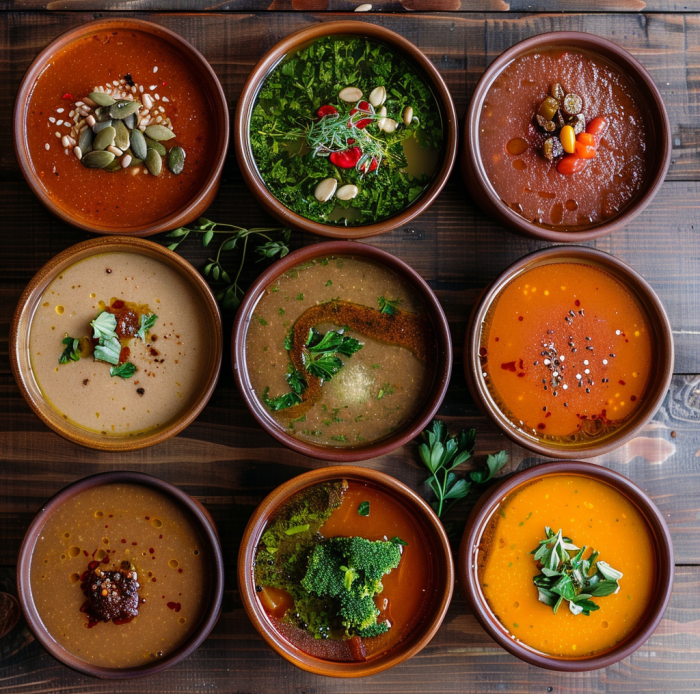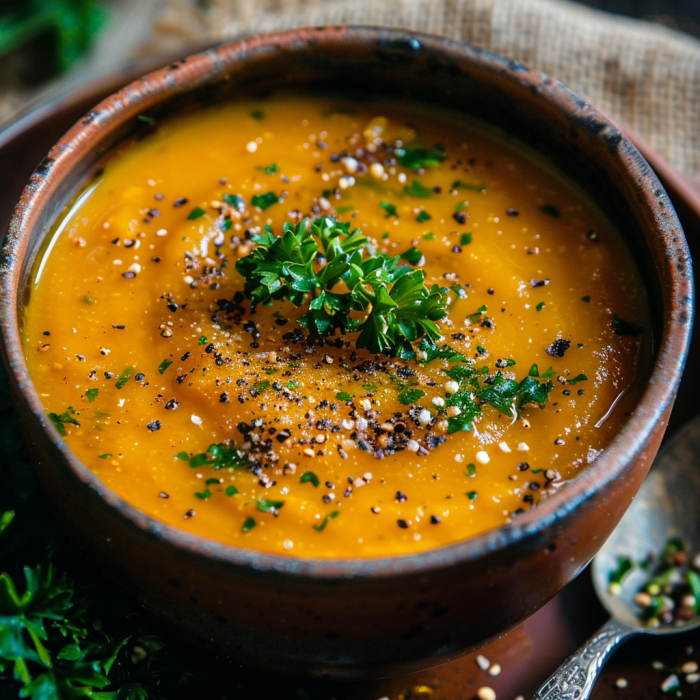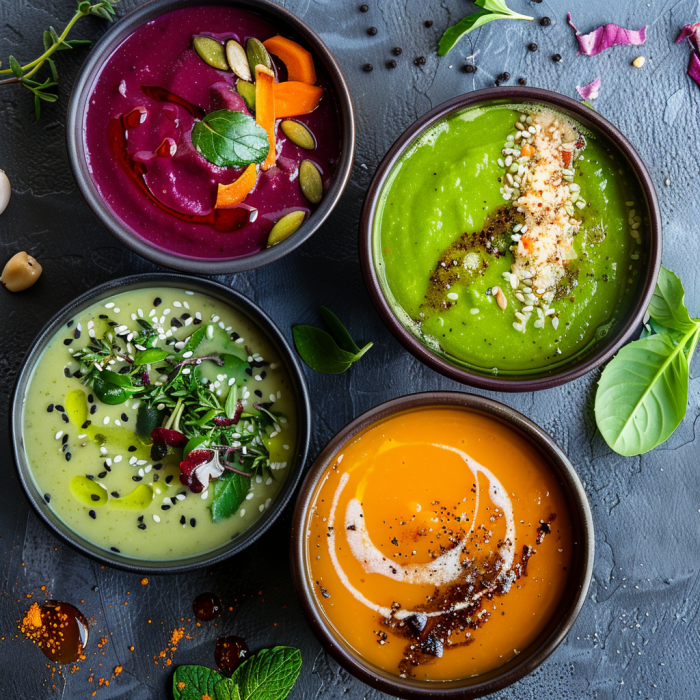
Did you know over 300 Michelin-starred restaurants now offer abiotic factor soups? These dishes mix unexpected textures and bold flavors. They’re changing what we think of comfort food.
Abiotic factor soups use unique cooking methods and ingredients. This includes mineral-rich clays or broths heated by the earth. They’re not just tasty; they’re also surprising.
This guide is for those who love to try new foods. It covers classic and modern abiotic factor soup recipes. You’ll learn how to make these soups and avoid common mistakes.
Key Takeaways
- Abiotic factor soups use non-living elements like minerals or temperature shifts to shape flavor and texture.
- They’re featured in top restaurants but can be recreated at home with simple tools.
- Modern adaptations include both meaty stews and vegan options.
- Proper ingredient ratios and cooking times are critical to success.
- These soups offer diverse health benefits tied to their mineral-rich ingredients.
Understanding Abiotic Factor Soups and Their Culinary Significance
Abiotic factor soups are special because they use ingredients in unique ways. They also use cooking methods that bring out the best flavors. This makes them both new and rooted in tradition.
What Makes a Soup an “Abiotic Factor” Soup
Here are the main features of abiotic factor soups:
- Temperature control: Cooking at slow or fast rates changes how they taste and keep nutrients.
- Unique ingredients: Certain veggies, grains, and herbs are picked for how they react to cooking.
- Cultural techniques: Recipes often come from places like the Mediterranean or Asia, where climate helped preserve food.
The History and Origins of Abiotic Factor Cooking
These cooking methods started in the 1700s. Back then, cooks used fire and earth ovens to make lasting meals. Over time, these methods turned into abiotic factor cooking recipes that mix practicality with taste. Now, chefs bring these old ways into today’s kitchens.
Health Benefits and Nutritional Properties
Abiotic factor soups focus on keeping nutrients in during cooking. They often use veggies for vitamins and broth for minerals. This makes them a healthy choice.
For example, slow-cooked soups are full of fiber, which helps with digestion. Trying these abiotic factor cooking recipes is a great way to eat meals that are good for you and rich in culture.
Essential Ingredients for Perfect Abiotic Factor Soups
Creating great abiotic food recipes begins with picking the right ingredients. Each part is crucial for the soup’s taste and texture. Start with fresh veggies like carrots, onions, and potatoes. Add herbs like thyme and rosemary for depth, and spices like cumin or smoked paprika for complexity.
These ingredients work with abiotic factors during cooking. They change the soup’s flavor and how it feels in your mouth.
- Root Vegetables: Carrots, beets, and parsnips add sweetness and a thick texture.
- Aromatic Herbs: Fresh thyme and bay leaves are key in many abiotic food recipes.
- Smoked Spices: Smoked paprika or chipotle powder bring a unique smoky taste.

“Quality ingredients are non-negotiable. Fresh herbs and authentic spices make all the difference.” – Chef Maria Gonzalez, Abiotic Cuisine Specialist
For rare items like wild fennel pollen, check out stores like Spice World or online at Mountain Rose Herbs. If you can’t find it, use regular fennel seeds. But remember, the texture might be different. Always choose fresh produce and keep dried ingredients in airtight containers. Make sure to check the expiration dates for the best flavor.
When trying out abiotic food recipes, focus on ingredients that stay good under high heat or long simmering. Keep essentials like garlic, onions, bay leaves, and smoked spices ready. A well-stocked pantry means you can make soups anytime, without planning.
The Classic Abiotic Factor Greyeb Soup: A Step-by-Step Guide
Making the perfect abiotic factor greyeb soup takes time and care. Follow these steps to get its smooth texture and rich flavors.
Preparing the Base Ingredients
Start with a strong base using these key ingredients:
- 2 lbs mixed root vegetables (carrots, turnips, and celeriac)
- 3 tablespoons clarified butter or olive oil
- 4 cups homemade vegetable or bone broth
- 1 bay leaf and ½ teaspoon caraway seeds
Cook the vegetables until they’re soft. Then, add broth to deglaze the pan. Let the bay leaf simmer for at least 30 minutes to add flavor.
Achieving the Perfect Greyeb Consistency
Here’s how to get the soup’s signature texture:
- Blend cooked vegetables with broth until smooth. Strain through cheesecloth.
- Heat the mixture again. Add 2 tablespoons of arrowroot starch to thicken.
- Simmer uncovered for 15 minutes. Stir constantly to avoid lumps.
Tip: If it’s too thick, add broth a tablespoon at a time until it’s just right.
Serving Suggestions and Complementary Sides
| Side | Pairing Effect |
|---|---|
| Smoked paprika-dusted croutons | Adds crisp texture contrast |
| Pickled red onions | Cuts richness with tangy brightness |
“The best greyeb soups whisper their origins through their sides—never shout them.” — Culinary historian Marisol Torres
Serve in earthenware bowls with truffle oil drizzle. Offer rye bread on the side for dipping.
Hearty Meaty Stew Abiotic Factor: Comfort Food Reimagined
The meaty stew abiotic factor is a mix of rich flavors and tender textures. It’s both a classic and a new twist. Whether you’re just starting or have been cooking for years, learning its secrets makes every dish warm and satisfying.
Meat Selection and Preparation Tips
Choosing the right meat is crucial. Go for beef chuck or lamb shoulder. These cuts get tender when cooked slowly. Marinate your meat in vinegar or citrus for 2–4 hours before cooking. Searing the meat first helps keep its juices in, then slow-cooking blends the flavors. Don’t use lean cuts; they dry out quickly.
Balancing Flavors in Your Meaty Stew
- Start with caramelized onions and garlic for a savory base.
- Add earthy herbs like thyme and rosemary during simmering.
- Use a splash of red wine or tomato paste to balance acidity.
- Season slowly, tasting as you go to keep the meat’s flavor in check.
Storage and Reheating Guidelines
Keep leftovers in airtight containers. Refrigerate for up to 3 days or freeze for 2–3 months. Reheat on the stovetop over low heat, adding broth to keep it moist. Don’t use microwaves to avoid drying out.

Seasonal Variations of Abiotic Factor Soups to Try Year-Round
Adapting abiotic factor soups to the seasons lets you enjoy their core flavors while embracing fresh, seasonal ingredients. Whether you’re cooking in spring or winter, the key is balancing traditional methods with nature’s bounty. Here’s how to adjust your approach:
- Spring: Lighten your soups with tender greens like spinach or arugula. Use zucchini and leeks to keep broths fresh and vibrant.
- Summer: Cool down with cucumber, dill, or citrus-infused broths. Opt for lighter stocks and serve chilled variations.
- Fall: Embrace root vegetables like carrots and parsnips. Add warming spices such as cinnamon or nutmeg to enhance heartiness.
- Winter: Layer hearty meats or lentils for warmth. Slow-cook stews with winter squash or mushrooms to deepen flavors.
Preservation is key for year-round access. Freeze summer tomatoes for winter soups or pickle seasonal veggies to extend their use. Remember, abiotic factor soups thrive on adaptability—experiment with ingredient ratios but keep the foundational techniques intact. Adjust cooking times if using seasonal produce, and pair soups with seasonal sides like crusty bread or seasonal salads.
“The best abiotic factor soups marry tradition with what’s fresh—think of them as a canvas for the seasons.”
From zesty spring broths to hearty winter stews, these adjustments ensure your soups stay fresh and flavorful all year. Let nature guide your pantry and kitchen creativity.
Vegetarian and Vegan Alternatives for Abiotic Food Recipes
Changing abiotic food recipes to be vegetarian or vegan doesn’t mean losing flavor or texture. Find easy swaps and methods to make tasty dishes that use plant-based ingredients. These dishes don’t try to be like meat.
“The best plant-based abiotic dishes focus on what they are, not what they’re not,” says Chef Mara Lin, a leader in modern culinary innovation.
Plant-Based Protein Substitutions
Swap out old ingredients for these to keep dishes full and nutritious:
- Legumes: Chickpeas or lentils make soups thick and flavorful, adding protein.
- Tofu/tempeh: Firm tofu works well in stews, and tempeh’s nutty taste boosts savory flavors.
- Seitan: Made from wheat, seitan has a meaty texture in thick soups.
Enhancing Flavor Without Animal Products
Improve taste with these tips:
- Try umami-rich foods: mushrooms, soy sauce, or nutritional yeast for savory flavors.
- Roast veggies before blending to bring out their sweetness and smell.
- Use smoky paprika or miso paste for rich, complex tastes.
These tips help your abiotic food recipes stay vibrant and satisfying. Choose high-quality ingredients and bold spices to make meals that stand out on their own.
Common Mistakes to Avoid When Preparing Abiotic Factor Soups
Mastering abiotic factor cooking recipes needs careful attention. Many home cooks miss simple steps that change flavor and texture. Avoid these mistakes to make your soups stand out.
Temperature Control Issues
Incorrect temperatures can mess up your dish’s chemistry. A

“Abiotic factor soups rely on precise thermal reactions—don’t guess, measure!”
Here’s how to stay on track:
- Use a thermometer for simmering; aim for 180–190°F (82–88°C) to activate key compounds.
- Avoid boiling—gentle heat preserves delicate flavor molecules.
Ingredient Ratios and Proportions
Math is key here. Follow these guidelines for balanced abiotic factor recipes:
- Stock to solids ratio: 3:1 by volume for proper consistency.
- Acidic ingredients (e.g., vinegar, citrus) should never exceed 5% of total liquid volume.
- Always dissolve powders like thickeners in cold water before adding to broth.
Cooking Duration Errors
Overcooking or undercooking messes up chemical reactions. Watch for these cues instead of relying on timers:
- Test viscosity with a spoon—sauce should coat the back without dripping.
- Look for color shifts in the liquid indicating molecular stability.
By addressing these points, you’ll turn trial-and-error into consistent success with abiotic factor cooking recipes. Remember: precision makes good soups into exceptional ones.
Kitchen Equipment and Tools for Superior Abiotic Soup Preparation
Choosing the right tools is key to making your abiotic factor soups perfect. Here’s what you need in your kitchen:
- Heavy-Bottomed Pots: Dutch ovens or stainless steel pots spread heat well. Brands like All-Clad or Cuisinart keep food from burning during long cooking times.
- Cooking Thermometers: Digital thermometers from ThermoPro or Taylor help you keep an eye on important temperatures (like 180°F for clear broths).
- Mesh Strainers: Use fine-mesh strainers and chinois filters to get rid of unwanted bits for smooth soups. Stainless steel ones are tough and easy to clean.
- Wooden Spoons: Choose heat-resistant spoons (like silicone or bamboo) to avoid scratching non-stick pans while stirring thick soups.
| Tool | Purpose | Recommendations |
|---|---|---|
| Immersion Blender | Blend liquids without moving hot contents | Breville Control Stick or Cuisinart Cordless |
| Thermometer Probe | Keep track of exact internal temperatures | ThermoPro TP03 or CDN DTQ120A |
| Slotted Spoon | Get ingredients without breaking them | OXO Good Grips or KitchenAid |
A versatile sieve or colander is great for saving space. It can handle both straining and draining. For a basic setup, start with pots and thermometers. The right tools make every batch of abiotic factor soups consistent and reliable.
Pairing Suggestions: Drinks and Sides That Complement Your Abiotic Factor Soups
Adding drinks and sides to your abiotic factor cooking recipes makes the meal complete. It’s not just about the soup. Here’s how to choose pairings that bring out the best in each dish.
Beverage Pairings for Enhanced Taste
Think about the flavors you want to match. A Pinot Noir pairs well with earthy soups. Hoppy IPAs are great for rich soups. For something non-alcoholic, try sparkling water with lemon or herbal teas.
| Soup Type | Drink Option | Why It Works |
|---|---|---|
| Hearty Meaty Stew | Full-bodied red wine (e.g., Cabernet Sauvignon) | Deep tannins complement umami notes |
| Light Vegetable Broths | Sparkling water with lemon | Cleanses the palate between sips |
| Spicy Varieties | IPA beer or ginger ale | Cools heat while enhancing complexity |
Bread and Accompaniments
Choose textures that contrast with your soup. Crusty bread is perfect for soaking up broth. Crisp crackers add a nice crunch. Here are some ideas:
- Sourdough or rye bread for hearty soups
- Gluten-free crackers with creamy bases
- Pickled vegetables as tangy side accents
“The best pairings let each component shine without overpowering,” says Master Chef Elena Torres, a pioneer in abiotic factor cuisine. “Think of them as a conversation between flavors.”
Try pairing rustic breads with French broths or modern sides like avocado toast. Every part of the meal should work together to enhance your abiotic factor cooking recipes.
Conclusion: Elevating Your Culinary Repertoire with Abiotic Factor Soups
Abiotic factor greyeb and meaty stew abiotic factor recipes open doors to new culinary traditions. They mix old techniques with new flavors, perfect for all cooks. Start with classic Greyeb soup to learn the basics before trying more.
Whether you’re working on a meaty stew abiotic factor or perfecting Greyeb’s texture, each step boosts your skills. Adding the right sides and drinks can make these soups even better. Remember, the more you cook, the better you get. Start small and keep track of your changes.
Abiotic factor cooking is a mix of tradition and creativity. It lets you shape the future of cooking. By making these soups your own, you help evolve this culinary art. See these soups as a journey of taste and skill, not just meals. Your kitchen becomes a place where old meets new, creating dishes that are uniquely yours.
FAQ
What are abiotic factor soups and why should I try them?
Abiotic factor soups are special dishes that mix ingredients in new ways. They use certain cooking methods and temperatures. Trying them can add a fresh twist to your meals.
Can you provide simple abiotic factor cooking recipes?
Yes! Start with simple recipes like Greyeb soup or meaty stew. They teach you about abiotic cooking without being too hard.
What ingredients are essential for making abiotic factor soups?
You’ll need fresh veggies, quality meats, and special spices. Also, choose seasonal ingredients to make your soup even better.
How do I achieve the perfect consistency in my Greyeb soup?
For a smooth Greyeb soup, watch the cooking time and mix the right amounts. Blend well to keep it smooth.
What tips can you provide for making a hearty meaty stew?
Choose tender meat cuts for a great stew. Use aromatics and spices to flavor it right. Remember to store and reheat it well.
Are there vegetarian and vegan alternatives for abiotic food recipes?
Yes! Use plant-based proteins like legumes and tofu. Add umami-rich ingredients for flavor without animal products.
What common mistakes should I avoid when preparing abiotic factor soups?
Avoid wrong temperatures, bad ingredient ratios, and timing mistakes. Use thermometers and follow cooking process tips.
What kitchen equipment do I need for superior abiotic soup preparation?
You’ll need thermometers, even heat pots, and good knives. Choose tools that make cooking better.
Can you recommend pairing suggestions for drinks and sides that complement abiotic factor soups?
Pair your soup with wines or non-alcoholic drinks that match its flavors. Add bread or sides to complete your meal.



